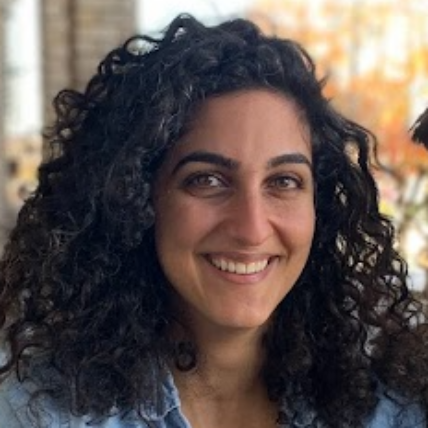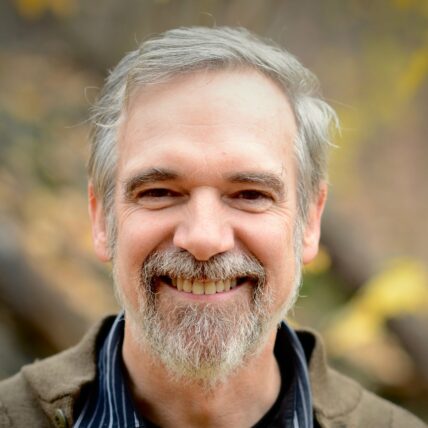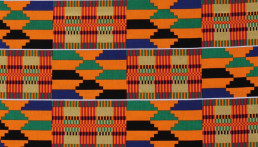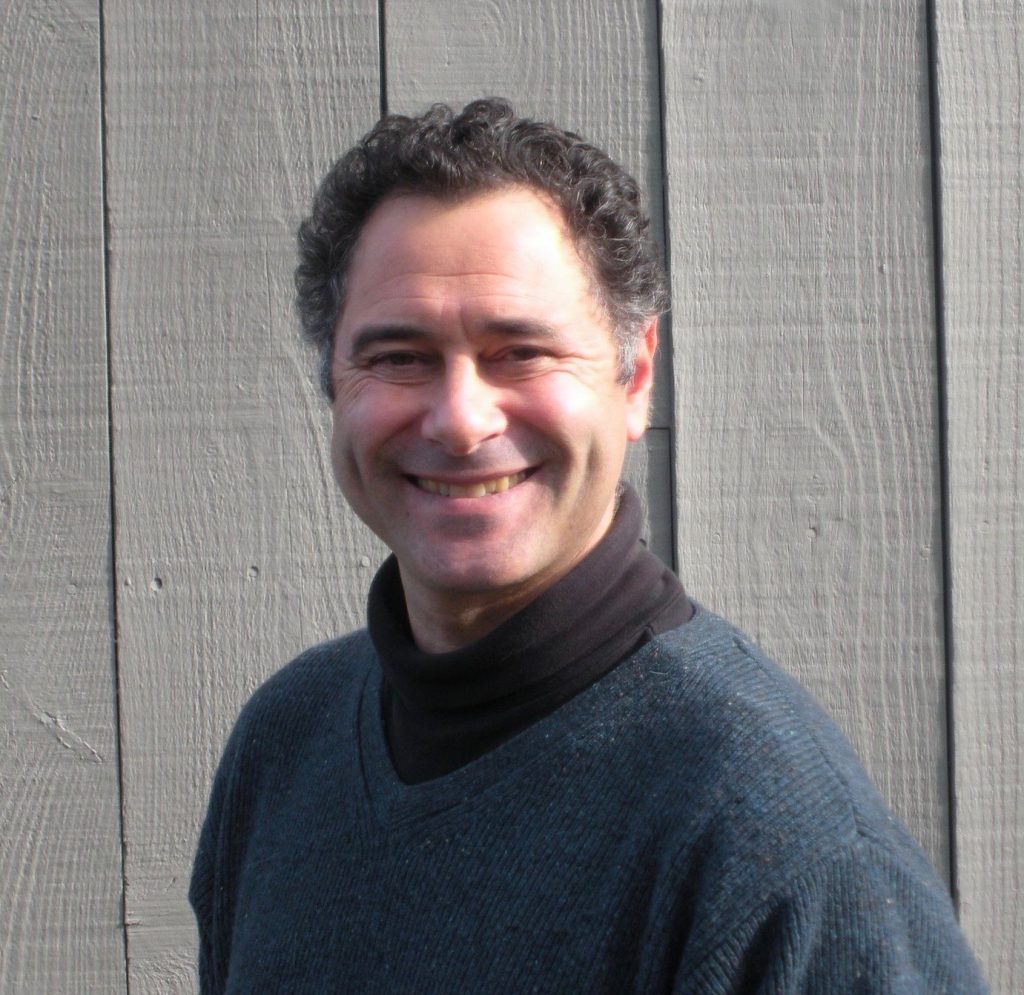Experimenting Towards Liberated Governance
Over a year ago, Vu Le published an article about the current models for nonprofit boards. The title “The default nonprofit board model is archaic and toxic; let’s try some new models” doesn’t bury the lede. Of the current models, Le writes:
“Over the years, we have developed a learned helplessness, thinking that this model is the only one we have. So we put up with it, grumbling to our colleagues and working to mitigate our challenges, for instance figuring out ways to bring good board members on to neutralize bad ones or having more trainings or meetings to increase ‘board engagement.’”
At Change Elemental, we have been experimenting with some new governance models, informed by the work of our clients, partners, and many others in the field who are trying out new structures and ways of governing. For example, Vanessa LeBourdais at DreamRider Productions has shared principles and practices of “evolutionary governance”, and Tracy Kunkler at Circle Forward has supported our learning about consent-based decision making. Countless other groups who have continued to uphold and practice historic, ancestral, Indigenous, and intergenerational structures of governance—and have informed these other values-aligned governance models—have catalyzed our learning.
Here, we offer a specific window on the evolution of our board, including some practices we’ve dreamed up, borrowed, and re-remembered to align governance with our values in a nonprofit system set up to default to white supremacy, paternalism, power over, and other oppressive habits.
The following questions have formed the basis of our governance and leadership evolution (we’ve shared more about our leadership evolution in recent blog posts here and here):
- How might we realize deep equity and liberation in leadership and governance?
- How might we evolve leadership and governance structures to share power and work in more networked ways?
- How might we align leadership and governance practices and culture with our values?
Our journey began a few years ago when our board and core staff team began to get curious about what it might look like to think about our board as mycelium. Mycelium are fungal networks that spread across great distances within soil (and sometimes underwater) and process nutrients from the environment to catalyze plant growth, supporting ecosystems to thrive. In our context, we use mycelium to refer to the powerful network of tendrils and roots that connect our board and core team to other people, groups, and organizations, enabling us to turn toxins into nutrients and nourish ourselves through our relationships to ensure collective thriving and care.
Here is what we’ve learned so far in our governance evolution (from the core team perspective—more from our governance team coming soon!):
Shifting language from “board” to “governance team” helped us reframe the governance team’s role.
Early on we shifted from referring to our board as “a board of directors” to a “governance team.” Tracy Kunkler of Circle Forward offered this definition in a small group experiment on governance we facilitated:
“Every culture (in a family, a business, etc.) produces governance — the processes of interaction and decision-making and the systems by which decisions are implemented. Governance is how we set up systems to live our values, and leads to the creation, reinforcement, or reproduction of social norms and institutions. Governance systems give form to the culture’s power relationships. It becomes the rules for who makes the rules and how.”
Shifting language supported us to shift our mindsets about governance. This language guided us towards greater clarity about our own governance team’s role: co-creating systems and practices that can support and catalyze us to live our values. It also deeply shifted how we both hold and reimagine the boundaries between the 12 people on our governance team, our core team (staff), and other partners to be more porous and center collaboration, emergence, and our interconnectedness.
However, because shifting mindsets requires shifting patterns and practice, this switch in language isn’t simple. We have noticed that we sometimes revert to using the term “board” rather than “governance team” when we are talking about potential barriers that the board may present or “traditional” board responsibilities such as fiduciary oversight. This is a work in progress and when we find ourselves reverting to old language, it is a signal that we might be in older practices, patterns, or ways of thinking about our relationship to the governance team and its role that are no longer serving us or our work.
Practicing liberatory governance is having one foot on land and one in the sea.
Getting clearer on our governance team’s role deepened our sense of what it might look like to realize deep equity and liberation in governance. We began to understand what “liberatory governance” could look like for us—a governance team that partners with us to bridge between current reality and the future we’re building by: moving the organization towards greater alignment with our values; and co-creating liberatory systems and ways of working together that can transform the larger oppressive systems we’re operating within. We talk about this internally as “having one foot on land and one on water,” a metaphor Hub member Elissa Sloan Perry shared from Alexis Pauline Gumbs. Gumbs hears best with “one foot in the water, one foot in the sand.”
In our organizational context, the “water foot” attends to things like our vision, uninhibited aspirations, values alignment, and acting today in ways that prefigure the world we want to see. The “foot on land” takes into account the world as it is, such as the requirements and legal constraints of our 501.c.3 tax designation, and current financial realities and access to other resources, where trust-based relationships can sometimes become transactional or even litigious. Our governance model values both “feet” in its awareness and decision-making. When we make decisions, the “water foot” leads with the “land foot” as a valued, supporting, and crucial partner.
Creating multiple, fluid points of connection across the staff and governance team helps build the relationships and trust necessary for shared leadership and power.
Building trust and mutual accountability are at the heart of our evolving governance structures and practices, just as we have found it to be in building toward shared power and leadership at the staff level. This work is more time-consuming than conventional governance models so we needed to build our collective capacity for sensing what is actually too much time. We also needed to strengthen our skill and capacity for generative conflict including discerning when to: enter into conflict and tension; sit with it so that we can reflect and discuss later; and/or intentionally let it go. This has meant getting more comfortable with sitting in discomfort when conflict can’t (or shouldn’t) be resolved immediately.
Some simple structures and systems support us in developing these capacities and discerning what is needed to build trust and move through conflict. For example, we wanted more interaction between our core team (staff) and the governance team, but didn’t want to necessarily add more large group meetings—we wanted connections to be deep and purposeful. To create purposeful connections, where a broad range of staff and governance team members could develop relationships and bring their unique gifts, we opted to have governance team co-chairs work with a staff liaison. The staff liaison partners with different staff, bringing different people into conversations with the co-chairs and other governance team members where their experience, wisdom, and gifts are critical. The co-chairs and other governance team members then connect together and separately into different areas of work based on their interests, skills, and what is needed.
We also evolved our governance team meeting structure to have staff members join for key sections of the meeting. We share the agenda in advance and offer some guidance to help staff decide when they might join or when they might opt out of a meeting. Additionally, staff and governance team members now caucus separately at the end of each governance team meeting to debrief and raise unresolved issues with the intention of sharing back what needs the full group’s attention. The caucuses support greater truth-telling across the governance team and core team, deepen our understanding of each other’s perspectives and help us dig into conflict with love and rigor.
Grounding in shared values is critical for practicing liberatory governance.
If you were to review the specifics of our governance team’s role, you might not find anything surprising or “new.” The difference is in how the governance team carries out these responsibilities – with a rooting in shared values with staff and commitment to working through differences in values when they show up.
In recruiting and engaging governance team members, we haven’t just sought out individuals who conceptually agree with our values (which were reflected in our recruitment criteria), but people who are game to experiment on what it looks like to make decisions rooted in those values. People who already embrace and practice inner work, multiple ways of knowing, experimentation, and emergent strategy—and who are looking to upend traditional governance team models and create and remember anew.
Even with the perfect container, structure, and systems, it’s the people who make up our core team (our staff) and governance team – their own values as well as their willingness to be in the generative tension that helps support shared values – who have accelerated our work in shared power and leadership both on the core and governance teams. Together, we are living into our vision and deepening our practices of shared leadership and shared power to shift conditions towards love, dignity, and justice.
Look out for more learning from these experiments in liberatory governance in the new year!
Natalie Bamdad (she/her/hers), joined Change Elemental in 2017. She is a queer and first-gen Arab-Iranian Jew, whose people are from Basra and Tehran. She is a DC-based facilitator and rabble-rouser working to strengthen leadership, organizations, and movement networks working towards racial equity and liberation of people and planet.
Mark Leach (he/him/his) has over thirty years of experience as a researcher and management consultant. Mark has a particular interest in strategy, leadership development and transition, and issues of equity and inclusion in organizations.
Originally published at Change Elemental
Banner Photo Credit: Kirill Ignatyev | Flickr
THE TAPESTRY: Weaving Life Stories
You are invited to listen to The Tapestry Podcast.
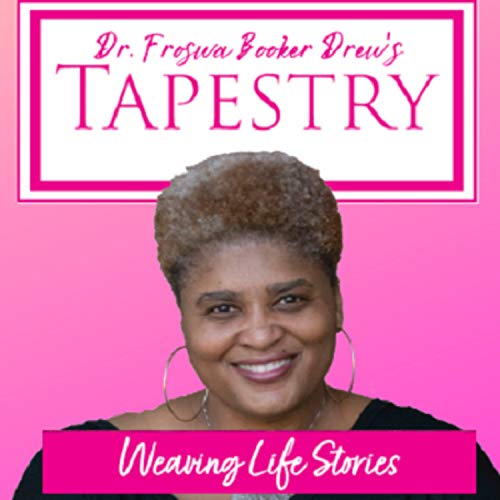
The podcast is about bringing people together to explore the rich, woven textures of our narratives. Our stories are impactful and in listening to the stories of others, we learn more about our own power, claim our purpose and pursue our passion. The fabric of our lives as women is strong, resilient and when we come together, we can make a beautiful piece of work to inspire, support and sustain our personal and professional lives. Although designed for women 50 and above, the wisdom shared is ageless. Join us as we share, laugh hysterically, cry, and keep it real all at the same time.
Some of The Tapestry's most recent episodes include:

THE STORIES BEHIND THE DATA - Meme Styles
In 2015, Meme Styles founded MEASURE to promote the use of evidence-based projects and tools to tell real-life stories behind the numbers. As a catalyst for systems change, MEASURE has grown to a fully operational nonprofit social enterprise that provides free data support to Powerful Black and Brown-led communities. So far the organization has provided over 3000 free data support hours to Black and Brown - led organizations.
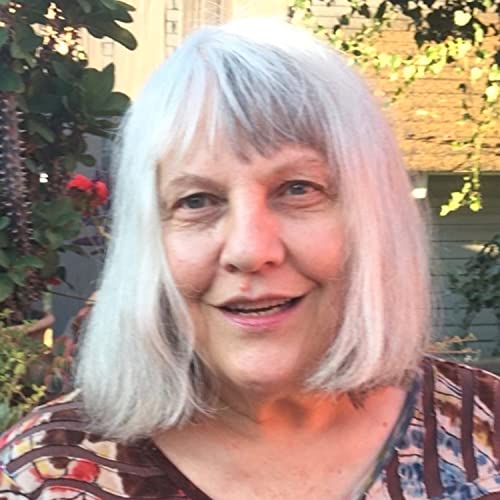
CREATING A PERSONAL NETWORK FOR TRANSFORMATION -- June Holley
June Holley has been weaving networks - and helping other learn to weave networks – for over 40 years. Much that she learned is included in The Network Weaver Handbook, 400 pages of simple activities and resources for Network Weavers. She also created www.dev.networkweaver.com, a site with many free resources and a blog authored by over 40 network weavers.

BOUNDARIES IN BUSINESS AND IN LIFE FOR 2022 - Kimberly Oneil
Kimberly O'Neil is an award-winning professor, executive leader, and social good expert. She was the youngest serving African American woman City Manager in the United States. As a veteran senior government and nonprofit executive, Kimberly has used her voice to impact policy decisions while lobbying in New York City and on Capitol Hill. She now works within the social sector and leads Giving Blueprint, a consulting company with a mission to impact social change through the development of strategic partnerships and growth plans within the social sector.

CRITICAL CONVERSATIONS ABOUT RACE - Amber Sims
Amber currently serves as the Executive Director of Young Leaders Strong City, a nonprofit focused on youth development, leadership, and racial equity. She was formerly the Director of Regional Impact for Leadership for Educational Equity, an educational nonprofit focused on leadership pathways in civic engagement. Previously, Amber led workforce development at Workforce Solutions Greater Dallas Opportunity Center. Her theory of change was to emphasize the connection between education, workforce, and dual generation impact.
Other guests have included:
- Dallas Maverick CEO and President Cynt Marshall
- Leah Frazier , 2-Time Emmy Award-Winning and 10-Time ADDY Award-Winning entrepreneur
- Paula Stone Williams, internationally known speaker on issues of gender equity, LGBTQ advocacy, and religious tolerance
- Rafia Zakaria, author of Against White Feminism (W.W. Norton, 2021) and Veil (Bloomsbury, 2017) and a writer for the Guardian, Boston Review, The New Republic, The New York Times Book Review and Al Jazeera America
- Gretchen Bauer, Luxury handbag manufacturer
Find all The Tapestry episodes HERE
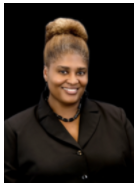
Dr. Froswa’ Booker-Drew is a Partnership Broker. Relational Leadership Junkie. Connector. Author/Speaker/Trainer. Co-Founder, HERitage Giving Circle. Currently, the Vice President of Community Affairs of the State Fair of Texas, she has been quoted and profiled in Forbes, Ozy, Bustle, Huffington Post and other media outlets around the world. In addition, she has been asked to speak on a variety of topics such as social capital and networking, leadership, diversity, and community development to national and international audiences. This included serving as a workshop presenter at the United Nations in 2013 on the Access to Power.
featured image found HERE

Network Weaver is dedicated to offering free content to all – in support of equity, justice and transformation for all.
We appreciate your support!
donate in the box above or click here
Leadership and Community in a Time of Transition
In communal transformation, leadership is about intention, convening, valuing relatedness, and presenting choices. It is not a personality characteristic or a matter of style, and therefore it requires nothing more than what all of us already have. This means we can stop looking for leadership as though it were scarce or lost, or it had to be trained into us by experts. If our traditional form of leadership has been studied for so long, written about with such admiration, defined by so many, worshipped by so few, and the cause of so much disappointment, maybe doing more of all that is not productive. The search for great leadership is a prime example of how we too often take something that does not work and try harder at it.
Peter Block, Community: The Structure of Belonging
As a white man born into a well-off and well-educated family in the US, the idea that I might step into leadership was part of my conditioning. And as someone who has chosen work that involves issues of justice, equity, and inclusion, I find myself challenged to re-evaluate the very definition of leadership. In this, I have found two books to be particularly helpful. Reading Peter Block’s Community: The Structure of Belonging in 2010, I was struck by his declaration that “leadership is convening,” and by the concrete guidance he provides for living into that story. Some years later, I was further inspired by Frederic Laloux’s description in Reinventing Organizations of a new paradigm for governance, his addressing of questions related to hierarchies and self-organizing, and his vision for what might be possible as we continue to evolve our capacities for new forms of organizing. Both authors start from the premise that our conception of leadership in the dominant Western culture is failing us, opening the way to new approaches based on “power with” rather than “power over.”
I was brought up within that dominant culture as one of its most privileged members, and was taught to excel in things like critical analysis and debate. Then in 2010, I found myself called into work inspired by a new possibility that I suddenly recognized: we could make powerful use of our new virtual capacities to convene large groups of people by engaging them in generative dialogue about systemic transformation. I found that my old training did not serve me and was in fact a handicap in many respects. At the same time, I discovered that I had gifts for creating and holding hospitable space, listening deeply, and making meaning out of the diversity of opinions, beliefs, and worldviews that were being expressed in the conversations I helped convene. Block’s work offered both a powerful validation of this new direction and a road map for the journey.
Around the same time that I was reading Community, I had the delightful experience of shifting my story about myself. I had worked with a professional career consultant a few years earlier and had tested as an introvert (INFJ) on the Myers-Briggs personality inventory. Then one day while driving home and mentally preparing for a World Cafe conversation I was about to host online, it struck me that the excited energy I was feeling was characteristic of extroverts. So I immediately called my friend David, a Myers-Briggs maven, and asked him to look up the characteristics of the ENFJ personality. The answer? That people like me are leaders of groups, and that others are drawn to participate in those groups not because of efforts we make to persuade them that they should do so, but simply because of the way we show up. In Block’s words, this is “invitation as a way of being,” where the artist replaces the economist/salesman.
As I reflected on why I might have scored as an introvert, it occurred to me that I had exiled my gifts as a convener of hospitable space. My explanation for having done so was that, throughout my early adulthood, my efforts to show up as a whole person were not well received. So I told myself the story that I preferred my own company and a small set of close relationships, and that being in groups was a challenge for me because of my nature. Accordingly I made my professional world a small one, holding back on what I felt called to most deeply. Reflecting on this anew, it occurred to me that I had intuitively sensed the bankruptcy of the dominant paradigms through which I had been told I was supposed to engage with the world, and that the painful experiences in my work were the result of my rebellion against operating in that context. The discovery of this new way of showing up--as a convener of groups, in service to movements for transformational change-- was utterly liberating.
The other inspiration I drew from Block was the idea that community is required for transformation. It is not enough for us to work on ourselves in isolation. As Thich Nhat Hanh has famously said, “the next Buddha may be a sangha.” And so I embraced the creation of community as a core purpose of my work. I came to see the emergence of social fabric made up of many interwoven relationships as being the most important outcome in any engagement, over and above the conversational content or action planning that often provides the explicit context for a gathering.
The places where we live are failing to provide a strong sense of community for many of us. Other traditional markers such as nationality, ethnicity, gender, political ideologies, extended family structures, etc. also often do not seem sufficient or lack resonance. As a result, we are witnessing the increasing fragmentation of identity, accompanied by a yearning for belonging and connection to replace what we have lost. The dangers of this phenomenon are apparent all around us, most prominently in the political realm, as a product of the broader challenge of simply identifying a shared reality. As we all struggle with the fact that conventional wisdom has shown itself to be incomplete, flawed, and sometimes false, many are choosing to embrace conspiracy theories--a phenomenon that I believe to be toxic. Yet I also see a great opportunity in this unraveling--a chance for humanity to go through a kind of reweaving (or re-wilding) that builds upon what was good and important about our previous stories and forms of identity, yet also transcends the limits they carried with them.
As we co-create new forms of community, we get to try out identities that connect us directly to our gifts. Anthropologists have determined that the natural size for a tribal unit is a little less than 160 people, and that the “gift economy” was the original form of organization that we employed in such groups. I love to imagine what a group that size can do today with the power of our new technologies, if it succeeds in fully bringing forth the gifts of its members and releasing them into the world. And what might be possible if these “tribal groups” learned to connect and collaborate with one another, based on natural alignments in purpose and values? And then what if we learned to do this in a way that reconnected us to the earth as a whole, by linking together our care for each of the places where our feet touch the ground?
This vision of transformational communities requires a good deal of coordination, collaboration, and co-creation both within and among groups. So it is not surprising that the crucial need for wise and effective governance has emerged in my work time and time again. Tom Atlee, my first mentor in the convening work I began in 2010, introduced me to the concept of collective intelligence and to a wide variety of processes that have been developed for tapping into it, including many that relate to governance and decision-making. His new Wise Democracy Pattern Language is a wonderful resource, as is the Co-intelligence Institute website he curates.
The need for governance structures became more tangible for me when I co-launched Occupy Cafe and was exposed to consensus decision-making and Sociocracy. Not long after that, I became part of the core team for the Great Work Cultures initiative and was also introduced to the Future of Work movement, both of which focused on new paradigm approaches to decision-making and sharing power in the workplace. Another influence was the concept from The Circle Way of “a leader in every chair.” And the related idea that movements need to be “leaderful” rather than “leaderless” came from Peggy Holman, whose book Engaging Emergence also taught me practical and inspiring approaches to convening. Then in 2014 I read Frederic Laloux’s Reinventing Organizations, which seemed to pull it all together.
Like Block, Laloux presents models for organizing ourselves using “power with” rather than “power over.” In his synthesis based on the study of a wide variety of organizations, he identifies three key innovations: evolutionary purpose, self-organizing, and the welcoming of our whole selves into the spaces where we work. He gives examples of each of these patterns happening in a number of organizations, while also stating that he has yet to see any instance where all three are present in a single one. Since he wrote his book, many people--myself included-- have been inspired by his observations (and those of the many others working on similar visions of “next stage” organizations) to attempt to co-create initiatives that have all three of these elements in their DNA.
One of the interesting patterns I've observed in groups that take up this challenge has to do with hierarchies. Because our old models have failed us so dramatically in so many respects, there is now a deep mistrust of leadership. And because so many voices have been marginalized for so long, there is a need for them to now be heard. How we learn from these experiences in order to create spaces where we thrive can be a tricky thing.
I remember vividly my visit to the Occupy Wall Street encampment in New York City in 2011. I was particularly struck by the general assembly I witnessed that day. There was a problem to deal with: a giant pile of dirty, wet laundry had accumulated as a result of several days of rain. It was beginning to mildew. Someone had already secured a truck and located a laundromat uptown that would welcome them. All that remained was for the group to decide to allocate money for the laundry machines. There were easily 150 people participating in that deliberation. It took over an hour (using the famed “people’s mic”) to hear everyone who wished to speak and to decide that yes, the money should be released so that the laundry could get done. While many might have seen this as something less than good governance, I chose to interpret it as a kind of communal poetry!
It is crucial that we create spaces for collective expression that allow all voices to be heard. Peter Block gives us one model for doing so in a way that weaves community and brings forth our gifts. His approach creates a context of relatedness, trust, commitment, and the safety to dissent. These are crucial precursors to sharing power well, but we also need structures and processes designed to support us in making decisions together in a good way. A key pattern for doing this, as Laloux found in his research, is the empowerment of small groups closest to the work that needs to be done as the vehicle through which authority is allocated. As Block also declares: “the small group is the unit of transformation.”
When needed, small groups can seek input from the whole community or organization, and can also reach out beyond it to all stakeholders, if desired. We have lots of great methods for this kind of "advice process," not to mention talented facilitators who love this kind of work. But it still makes sense in most cases for a small group--people connected to the needs being addressed and the consequences of their choices-- to process that broader input, make an appropriate decision, and then stay engaged and agile in order to respond to what happens as a result. Sociocracy works in this way, and I am very drawn to that methodology, although a full implementation of all its elements may not be the right answer in many cases. Indeed, I don't believe there is a one-size-fits-all solution, and I think that we are still very much in the beginning stages of figuring out how to do this well. This is especially true to the extent that we wish to transcend the organization as the core unit through which work must be done, returning to communities as the way to meet many more (and perhaps even most) of our needs.
The context in which these questions about leadership and community have the most meaning for me is the possibility of near-term civilizational collapse. Though Jem Bendell has become perhaps its most prominent voice today, Meg Wheatley was the thought leader I first paid attention to who was preaching this gospel. After many years of working to support the emergence of a new paradigm for humanity based on the idea that “whatever the problem, community is the answer,” Wheatley had a change of heart, giving up on the idea that we could still “save the world.” In her 2012 book So Far from Home and the subsequent Who Do We Choose to Be? she painted a stark picture of despair among many who, like her, had worked for decades to bring forth a world that works for all beings. Now she spoke instead of the need for leaders to create “islands of sanity” amidst the sea of collapse.
Is Wheatley right? Joanna Macy, the contemporary of hers who popularized the term “the Great Turning” to encompass the magnitude of the civilizational shift they and others were imagining, says that we still don't know whether it is too late for us to midwife that better world or not. I find her view to be compelling as well. This brings me back to Block, who emphasizes that the story we choose to tell ourselves is just that: a story and a choice. And that the choice we make has payoffs and costs.
And so I will close with a story I choose to tell myself. Holding onto it gives me the payoff of validating the community weaving work I feel called to do, and my sense of having found a good way to be a leader. It therefore helps me to minimize the guilt I hold onto for living a privileged life, including not doing more to dismantle the systems of oppression I benefit from, and choosing to have an environmental footprint that is way bigger than my personal fair share.
What are some of the costs of my attachment to the story? One is that I may not be paying attention to other possibilities for making use of my gifts. Another is that my sense of self worth and identity is dependent on outcomes I often cannot see and must take on faith. A third might be that I have fooled myself into believing that I am practicing “power with” when in fact I am perpetuating the old patterns of “power over.” Furthermore, this story leaves me open to the criticism that I am a “virtue signalling” hypocrite because, while I claim to be a stand for the need to transform our ways of doing things so that we reweave rather than unravel our environmental, social, and spiritual life support systems, I am choosing a life of privilege that contributes to that very unraveling.
For now, knowing all that, I am sticking with the story...
There may not be much difference between the work of creating islands of sanity and of reweaving the whole world. It might “simply” be a matter of tens of thousands of transformationally empowered communities, each doing powerful work in their own local domains (be they place-based or virtual) while also supporting one another to bring forth a global shift. For all we know, just as the mycelial mat is hidden from our view and has only recently come to define our basic understanding of how a forest works, a sufficiently dense weaving of relationships, flows of information and resources, and connections to other parts of the transformational ecosystem might already be underway such that tens of thousands of these communities are springing up around the globe, mushroom-like, in order to nourish us, transform our collective consciousness, and cast billions of potent spores to the winds of change.
*Published in the Sharing Corn Journal, Volume 2, available from Joy Generation in print form here and in digital form via Amazon here.
featured image found at WSJ.com
Ben Roberts is a systemic change agent and“process artist,” working in service to what Joanna Macy and others have called "The Great Turning." Inspired since 2010 by the internet’s largely untapped power to convene and support new modalities for participatory dialogue, he has been a pioneer in bringing large group conversational processes into the virtual realm via platforms such as Zoom and Slack, and in blending and creating synergies between virtual and in-person engagement.
PLEASE DONATE to help Network Weaver continue in it’s mission to offer free support and resources to networks worldwide.

